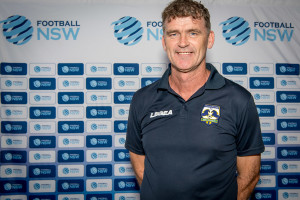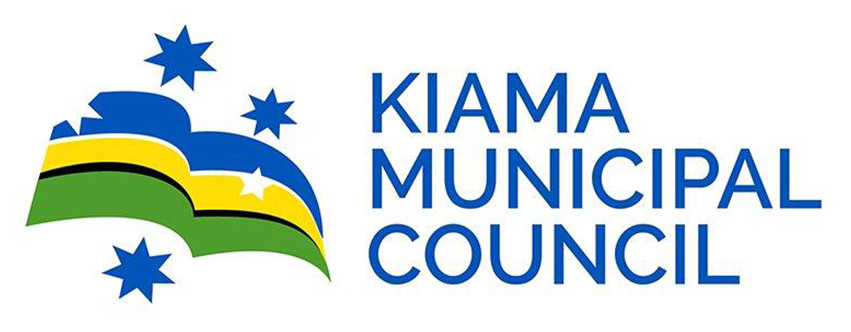Socceroo great Alex Tobin
(Photo credit to FNSW)
Alex Tobin, the former Socceroo great, has served football with distinction for many years in his capacity as a player, PFA Board member, senior coach at Central Coast Mariners and Technical Director at Football NSW
After six years at the helm of FNSW, Tobin has taken over a new role as Technical Director at Hills United F.C.
Tobin’s contribution to the game is immeasurable and his understanding of what is required to fast track our football development to a new level should be on the agenda of all football organisations in Australia.
In this interview with Roger Sleeman, Alex Tobin explains in plain and simple terms what pathway youth development should be following.
Crucially, the time has finally arrived when former Socceroos, like Tobin, should be listened to intently by the people who claim they want to see football reach its full potential in Australia.
ROGER SLEEMAN
How much has football changed in Australia since you first signed with Adelaide City in the N.S.L. during the mid-1980?
ALEX TOBIN
It’s a totally different setup as the game has become far more professional with the A-League and the national team.
Nevertheless, the game should’ve grown more because the large participation rate has never been exploited.
We needed a working force years ago to capitalise on our playing numbers so the game could grow exponentially.
R.S.
How do you compare the coaches and players of the NSL with the A-League?
A.T.
It’s difficult to compare eras because there were great players in the 80’s, 90’s and early 2000’s, many who played overseas with great success and represented Australia making it a force to be reckoned with.
In the NSL, there was a big gap between the top six or seven top teams and the other teams because they usually had the best players due to superior financial stability.
Edmund Kreft was my first coach at Adelaide City, followed by Zoran Matic who guided us to the NSL title in 1986.
They were both intense coaches who developed my game considerably from my first days at Birkalla Rovers in the South Australian State League.
We trained every day so when you were playing in the NSL and you had Socceroo commitments, it was a sink or swim environmemt.
Obviously, coaches like Frank Arok, Eddie Thomson and Len McKendry would’ve been successful in any era.
R.S.
How were you able to transition to coaching so quickly after you retired from playing?
A.T.
At the end of the NSL in 2004, I was a senior player with Northern Spirit when Lawrie McKinna and Ian Ferguson were the senior coaches.
I was fortunate to be given the opportunity to join Mckinna and Ferguson on the coaching staff at Central Coast Mariners when the A-League started.
Also, I’d always coached juniors and was heavily involved with teams in the Hills district.
The first season at the Mariners was a big challenge because we had to find a team from scratch and put it together, and develop a training regime and a football following for the club.
History is the testament to our success and the six years I spent there gave me a solid coaching foundation and a thorough understanding of what was required to coach at the top level.
R.S.
How do you rate the technical ability of our youth players?
A.T.
It’s a common question as to how we’re developing young players and are we able to get them to the highest level.
We seem to achieve more with them when they’re much younger but the biggest obstacle is the lack of early opportunity provided for them to play senior football.
For example, if a player doesn’t get a break between seventeen to twenty years of age, there is no way forward.
Critically, the lack of money, resources, expertise and time is severely lacking compared to the Asian countries we’re competing with at youth level.
People are surprised Vietnam can beat us at youth level but they have much larger resources which allow their players a greater chance to develop.
Nevertheless, players between the age of nine to eleven are receiving much better coaching under the SAP scheme than previously because in the past the game was a combative, kick and chase physical style which catered for a tough level for tough kids.
However, the reality was, we weren’t matching other countries technically and tactically so a physical approach was our best option.
R.S.
Throughout the A- League and the national squad, there is a predominance of one sided players.
How can this problem be overcome?
A.T.
I’ m hoping this will improve in time because I can see the failings in A- League players who are so predictable.
I was fortunate when I was played at left back in my early days at Birkalla Rovers and was actually signed by Adelaide City in that position.
My early coaches got me working on my left side with passing and crossing which made a massive difference to my career.
In coach education today, it is instilled into coaches doing their C Licence that they insist at the SAP level, that right and left side techniques are repeated continuously. No choice should be given to a player to be one sided.
Ten years ago this wouldn’t have happened because coaches weren’t aware in many cases of the importance of mastering two sided technique.
Hopefully, with better coaching development and more qualified coaches, the problem will dissipate.
R.S.
In spite of the obvious improvements you have highlighted in the younger age groups, why isn’t there a production line as we had from the late 1970’s to the early 2000’s?
A.T.
As I alluded to, the u/17, U/20’S and Olyroos previously were exposed to senior football which made us competitive at youth level.
Unfortunately, now the teams we use to play with success are better resourced.
In contrast to us, our Asian opponents invest big money in football development and the coaching education process. Consequently, our production line is a mere trickle compared to our Asian counterparts.
Japan did its planning and resourcing twenty five years ago and for every coach we accredit, they are producing fifty.
Critically, the majority of players from my era weren’t encouraged to pursue a coaching career so the young players of today have been denied access to this great human capital resource.
R.S.
Was it a bad move to close down the A.I.S. facility, the Centres of Excellence and the State Academies to be replaced by A-League and NPL Academies?
A.T.
It was a very controversial decision because the AIS ran a full time program and the other bodies acted as feeder systems.
The reality is, not all clubs have the funding to support coaching education and improvement in coaching standards.
Therefore, a plan should have been devised eight to ten years ago to implement the current system, rather than using an adhoc approach.
R.S.
What is your opinion of the FFA and FNSW approach to development?
A.T.
I’ll make one thing clear.
Being involved in youth development on a daily basis is an intense process and there certainly isn’t the glamour associated with coaching an A-League, W-League or NPL outfit.
Youth development is only written about when it goes wrong and the criticism can be as damaging as an A-League club folding.
Coaches get very little recognition and the politics of the administration are often counterproductive.
Organisations prefer to argue, rather than seeking common ground, and the football, players and coaches really suffer from bad decisions made in boardroom tussles.
R.S.
How do you see the potential of Hills United?
A.T.
The north west of Sydney is a huge growth area and the club is matching its ambitions with this expansion.
Since I’ve been at the club, there has been a rapid increase in participation numbers and the quality of the SAP players is exceptional which will guarantee the projected targets to progress these players to the pinnacle of the game.
It’s a very ambitious Board led by president, Kazan Haddan, and the club is currently working with the local council to develop a first class stadium and acquire better facilities.
At the moment our Youth League teams play in NPL Youth League Tier 1.
Importantly, everybody at the club is committed to youth development, engaging the community and growing with it to achieve the highest level of competitive football.




